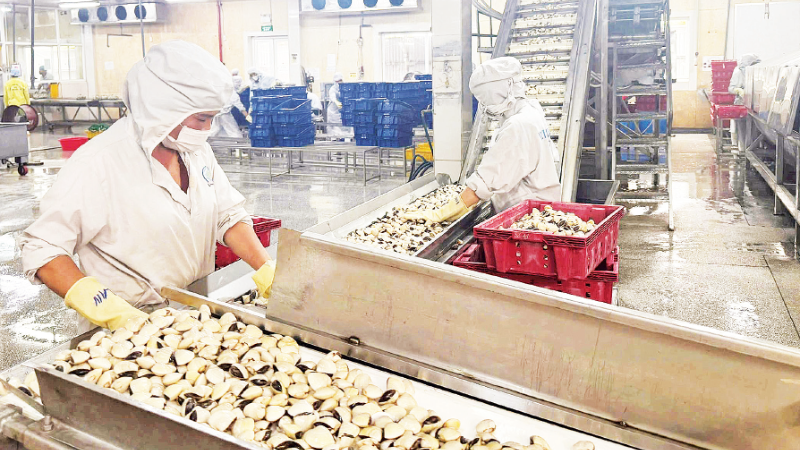Agricultural insurance needs clear legal framework
Amid increasingly severe natural disasters and unpredictable climate change, agricultural insurance should be regarded as a pillar of social security and a national risk management tool.

More than just a financial solution, insurance must become an “economic shield” enabling citizens—especially farmers and vulnerable groups—to effectively respond to natural shocks.
Each year, natural disasters cause damage worth between 15 trillion and 30 trillion VND (approximately 600 million–1.2 billion USD), forcing the State to spend budget resources on recovery, public support, and the restoration of production. The losses are not only financial figures but also disruptions to production, interruptions in supply chains, localised food insecurity, and long-term psychological impacts on communities.
Although the State always has emergency relief packages, the budget cannot keep pace with the increasing risks. In this context, insurance—particularly non-life insurance—becomes an effective risk-sharing tool, reducing the financial burden on both citizens and the national budget.
Although the State always has emergency relief packages, the budget cannot keep pace with the increasing risks. In this context, insurance—particularly non-life insurance—becomes an effective risk-sharing tool, reducing the financial burden on both citizens and the national budget.
For example, Typhoon Yagi in 2024 caused more than 83 trillion VND (about 3.32 billion USD) in damages across multiple provinces. At Agribank alone, over 28,000 customers were affected, with related outstanding loans totalling around 40 trillion VND (1.6 billion USD). Some insured customers received timely payouts: Viet Truong Company (Hai Phong) received over 22 billion VND (880,000 USD) from Agribank Insurance (ABIC), while Presenza Electrical Equipment Company (Ha Noi) was advanced 1 billion VND (40,000 USD) after the storm.
“The insurance payout came at exactly the right time. Without it, we could not have restarted the factory or kept hundreds of workers employed. It’s not just about money—it’s about trust in the insurance system and tangible support during a crisis,” said Ngo Minh Phuong, CEO of Viet Truong Co., Ltd.
Over the past decade, three non-life insurance companies affiliated with Agribank (ABIC), VietinBank (VBI), and BIDV (BIC) have paid out more than 20 trillion VND (800 million USD) in claims to customers facing risks.
National Assembly deputy Phan Duc Hieu stressed that the aftermath of Typhoon Yagi underscores the essential role of insurance. Insurance not only compensates for damages and supports production recovery but also adds value when insurers proactively advise clients on risk prevention to reduce losses. In reality, uninterrupted production and business activities are critical, when insurers help clients minimise losses, recovery is much faster. This is a value of insurance that is rarely emphasised in the media or public discourse.
In the agricultural sector, risks are constant, yet insurance is often seen as a luxury. Farmers, lacking capital and financial literacy, are vulnerable to natural disasters and market volatility, but very few have access to insurance. According to Nguyen Anh Tuan, Vice President of the Viet Nam Insurance Association, this is due to limited awareness of agricultural insurance’s role, inadequate public communication, and the fact that—even if not high—insurance costs can still be a burden for some households.
Resolution No. 19-NQ/TW, dated June 16, 2022, by the Party Central Committee on agriculture, farmers, and rural areas towards 2030 with a vision to 2045, clearly defines the goal of developing green agriculture, modern rural areas, and civilised farmers—placing insurance on par with infrastructure investment, seed and livestock development, and preferential credit.
However, despite products such as crop insurance, livestock insurance, and credit protection insurance, participation rates among farmers remain low. One reason is that farmers are not in the habit of purchasing insurance, often relying on State support when disasters or epidemics occur.
In agricultural regions, people generally have low incomes, limited knowledge of insurance, and constant exposure to risks. Without policy and communication support, even the best-designed insurance products will struggle to be effective. The State must recognise that insurance is not merely a market commodity but a social security mechanism, reducing the budgetary burden when disasters strike.
Do Minh Hoang, a member of the Board of Directors of Agribank Insurance
According to Do Minh Hoang, a member of the Board of Directors of Agribank Insurance, areas where local authorities and insurers work closely together see insurance becoming a reliable safety net. However, some economic experts argue for building a coordinated ecosystem involving banks, insurers, local governments, and social organisations. Banks, in particular, should play a key role in delivering insurance products to rural areas, where they are often the only formal financial access point.
The amended Law on Credit Institutions, effective July 1, 2024, prohibits cross-selling insurance through banks by “bundling” it with credit products to protect consumers. However, excessive restrictions may unintentionally create further barriers for rural residents—already facing difficulties accessing agricultural insurance.
Representatives from VietinBank Insurance (VBI) note that the current legal definition of “bundling” remains ambiguous, making insurance distribution through banks challenging. A more flexible legal framework is needed to both protect consumers and support sustainable business development. Clear guidelines should be issued to ensure effective cooperation between banks and insurers without reducing rural residents’ access to insurance. Additionally, tax incentives and subsidies for agricultural insurance premiums should be considered, and distribution through banks should be permitted under transparent conditions that protect customers and avoid misunderstandings about compulsory “bundling.”
Issuing a dedicated decree on agricultural insurance has become urgent. Experts emphasise the need to clearly define the roles, responsibilities, and benefits of all stakeholders; establish budgetary support mechanisms; share risks between the State and insurers; and encourage partnerships among the State, farmers, scientists, and enterprises—with insurance serving as the financial safeguard.








